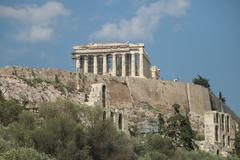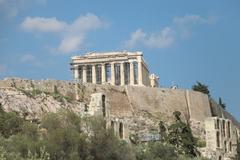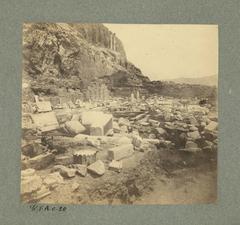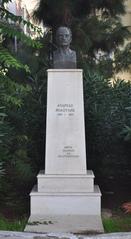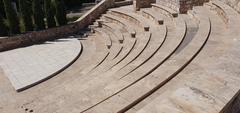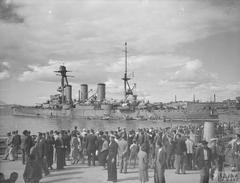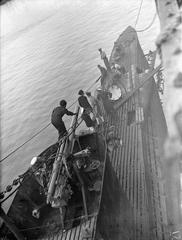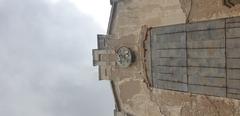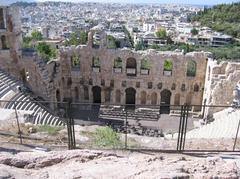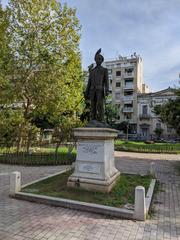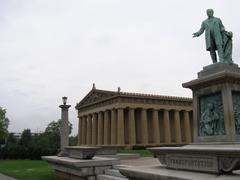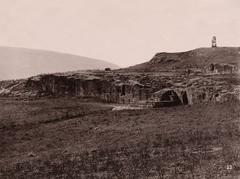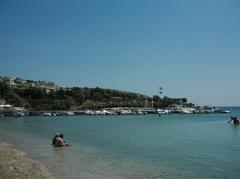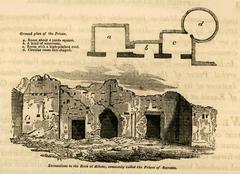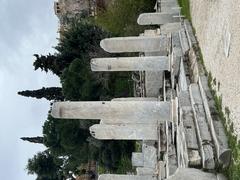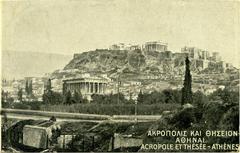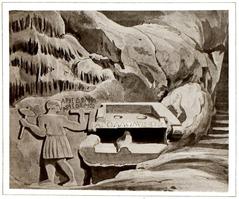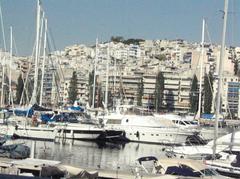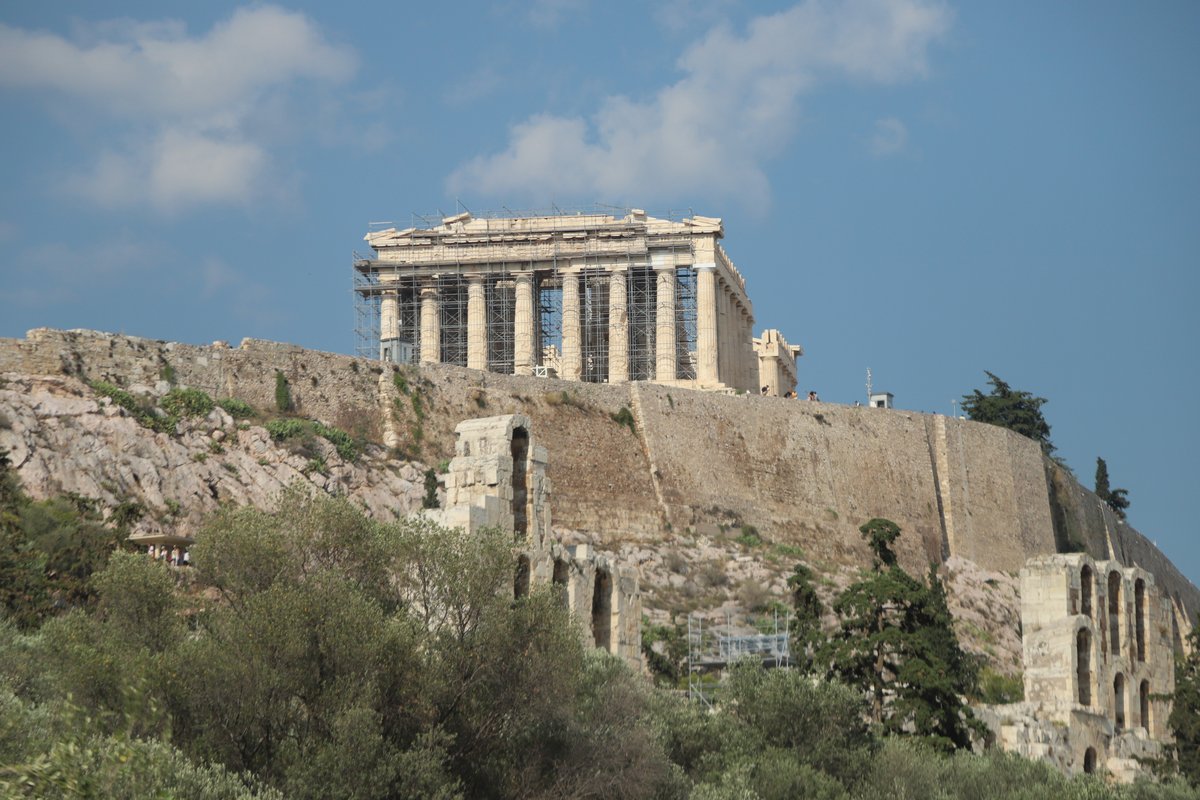
Visiting Acropolis: Hours, Tickets, and Tips
Date: 16/07/2024
Introduction
The Acropolis of Piraeus, nestled in the bustling port city of Piraeus, Greece, stands as a testament to the region’s rich historical and cultural heritage. This ancient stronghold, also known as the Munychia Acropolis, has witnessed numerous epochs—from its origins in the Mycenaean period around the 13th century BCE to its significant role in the Classical, Hellenistic, Roman, Byzantine, and Ottoman periods. The site offers a fascinating glimpse into the strategic, religious, and commercial significance it held through the ages. Visitors today can explore the remnants of ancient fortifications, temples, and other structures, gaining a deeper understanding of the historical importance of the Acropolis. This comprehensive guide provides essential information for anyone planning to visit the Acropolis of Piraeus, including its history, ticket prices, visiting hours, and travel tips, ensuring an enriching and memorable experience (Hellenic Ministry of Culture and Sports, Ancient History Encyclopedia).
Table of Contents
- Introduction
- History of the Acropolis of Piraeus
- Key Archaeological Discoveries
- Preservation and Conservation Efforts
- Visitor Information
- Nearby Attractions
- Accessibility
- Conclusion
- FAQ
History of the Acropolis of Piraeus
Ancient Beginnings
The Acropolis of Piraeus, also known as the Munychia Acropolis, is a significant historical site located in the port city of Piraeus, Greece. The origins of the Acropolis date back to the Mycenaean period, around the 13th century BCE. During this time, the area served as a fortified settlement, providing strategic advantages due to its elevated position and proximity to the sea. The Mycenaeans, known for their advanced engineering and architectural skills, constructed robust fortifications that laid the groundwork for the Acropolis’ future development.
Classical Period
The Classical period, particularly the 5th century BCE, marked a significant era for the Acropolis of Piraeus. Under the leadership of Themistocles, the fortifications were expanded and strengthened to protect Athens’ primary port. Themistocles recognized the strategic importance of Piraeus and initiated the construction of the Long Walls, which connected Athens to its port, ensuring safe passage and supply lines during times of conflict (Ancient History Encyclopedia).
During this period, the Acropolis served not only as a military stronghold but also as a religious center. Temples dedicated to various deities, including Artemis Munychia and Zeus Soter, were constructed, reflecting the religious and cultural significance of the site. The Acropolis became a focal point for religious festivals and ceremonies, further cementing its importance in the region.
Hellenistic and Roman Periods
The Hellenistic period saw the Acropolis of Piraeus continue to play a crucial role in the defense and administration of the port city. The fortifications were maintained and enhanced, and the site remained a key military installation. During the Roman period, Piraeus and its Acropolis experienced significant changes. The Romans, recognizing the strategic importance of the port, further developed the infrastructure, including the construction of new buildings and the renovation of existing structures (Livius.org).
The Acropolis also served as a center for administrative and commercial activities during the Roman era. The port of Piraeus became a bustling hub of trade and commerce, with goods from across the Roman Empire passing through its harbors. The Acropolis, with its commanding view of the port, played a vital role in overseeing and managing these activities.
Byzantine and Ottoman Periods
The Byzantine period brought about significant changes to the Acropolis of Piraeus. As the Byzantine Empire sought to fortify its territories against external threats, the Acropolis was once again reinforced and utilized as a defensive stronghold. The site also saw the construction of new religious buildings, including churches, reflecting the Christianization of the region.
During the Ottoman period, the Acropolis of Piraeus continued to serve as a military installation. The Ottomans, recognizing the strategic importance of the site, maintained and enhanced the fortifications. The Acropolis also played a role in the administration of the port, overseeing the collection of taxes and duties on goods passing through Piraeus.
Modern Era
The modern era has seen the Acropolis of Piraeus transition from a military and administrative center to a significant archaeological and historical site. Excavations and research conducted in the 19th and 20th centuries have uncovered numerous artifacts and structures, shedding light on the rich history of the Acropolis. These discoveries have provided valuable insights into the various periods of occupation and use of the site, from the Mycenaean era to the Ottoman period (Hellenic Ministry of Culture and Sports).
Today, the Acropolis of Piraeus stands as a testament to the region’s historical and cultural heritage. Visitors to the site can explore the remnants of ancient fortifications, temples, and other structures, gaining a deeper understanding of the historical significance of the Acropolis. The site also offers stunning views of the port of Piraeus and the surrounding area, providing a unique perspective on the strategic importance of the location throughout history.
Key Archaeological Discoveries
Several key archaeological discoveries have been made at the Acropolis of Piraeus, each contributing to our understanding of the site’s history. Among the most notable finds are the remnants of the ancient fortifications, which provide insights into the defensive strategies employed by the Mycenaeans, Athenians, and later civilizations. Additionally, the discovery of temples and religious artifacts has shed light on the religious practices and beliefs of the inhabitants of Piraeus throughout history.
One of the most significant discoveries is the remains of the Long Walls, which connected Athens to Piraeus. These walls, constructed under the direction of Themistocles, played a crucial role in the defense of Athens and its port. The Long Walls allowed for the safe passage of troops and supplies between the city and its port, ensuring that Athens could withstand sieges and maintain its naval dominance (Perseus Digital Library).
Preservation and Conservation Efforts
Preservation and conservation efforts at the Acropolis of Piraeus have been ongoing for many years, aimed at protecting and maintaining the site’s historical and cultural heritage. These efforts have included the stabilization and restoration of ancient structures, the protection of archaeological finds, and the development of visitor facilities to enhance the experience of those exploring the site.
The Hellenic Ministry of Culture and Sports has played a key role in these efforts, overseeing various projects and initiatives aimed at preserving the Acropolis for future generations. These efforts have included the restoration of ancient fortifications, the conservation of religious artifacts, and the development of educational programs to promote awareness and appreciation of the site’s historical significance (Hellenic Ministry of Culture and Sports).
Visitor Information
Visiting Hours
The Acropolis is open daily from 8:00 AM to 8:00 PM, but these hours can vary depending on the season. It’s best to check the official website for the most up-to-date information.
Tickets
Admission prices are €12 for adults, with discounted rates available for students and seniors. Tickets can be purchased online or at the entrance.
Travel Tips
Wear comfortable shoes, bring water, and be prepared for some uphill walking. Guided tours are available and can enhance your experience with in-depth historical insights.
Nearby Attractions
While visiting the Acropolis of Piraeus, consider exploring other nearby historical sites and attractions:
- Archaeological Museum of Piraeus: Home to a rich collection of artifacts from ancient Greece.
- Port of Piraeus: One of the largest ports in the world, offering a vibrant atmosphere and numerous dining options.
- Zeas Marina: A picturesque marina with beautiful yachts and a variety of cafes and restaurants.
Accessibility
The Acropolis of Piraeus is partially accessible to visitors with mobility challenges. Some areas may be difficult to navigate due to uneven terrain and steps. It’s recommended to check with the site management for specific accessibility accommodations and assistance.
Conclusion
The Acropolis of Piraeus stands as a remarkable testament to the rich and diverse history of the region. From its origins in the Mycenaean period to its role as a strategic military and religious center in the Classical, Hellenistic, Roman, Byzantine, and Ottoman periods, the Acropolis has played a crucial role in the history of Piraeus and Athens. Today, the site offers visitors a unique opportunity to explore and appreciate the historical and cultural heritage of this ancient stronghold.
FAQ
Q: What are the Acropolis of Piraeus visiting hours? A: The Acropolis is open daily from 8:00 AM to 8:00 PM, but it’s best to check the official website for the most up-to-date information.
Q: How much are tickets to the Acropolis of Piraeus? A: Admission prices are €12 for adults, with discounted rates for students and seniors. Tickets can be purchased online or at the entrance.
Q: Are there guided tours available? A: Yes, guided tours are available and can provide in-depth historical insights.
Q: What are some nearby attractions to visit? A: Nearby attractions include the Archaeological Museum of Piraeus, the Port of Piraeus, and Zeas Marina.
Q: Is the Acropolis of Piraeus accessible to visitors with mobility challenges? A: The site is partially accessible, but some areas may be difficult to navigate. It’s recommended to check with the site management for specific accommodations.
Call to Action
We hope you enjoyed learning about the Acropolis of Piraeus. For more historical insights and travel tips, be sure to check out our other articles and follow us on social media. Download our mobile app Audiala for an enhanced travel experience, complete with interactive maps and guided tours.
